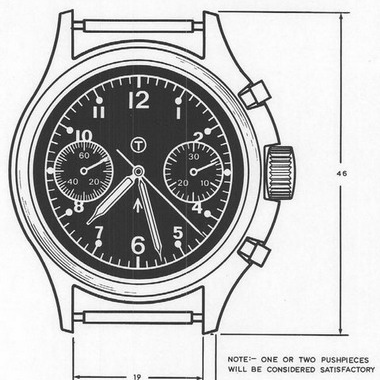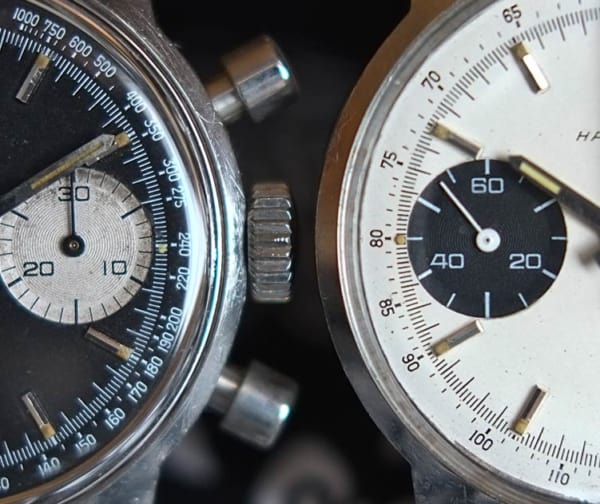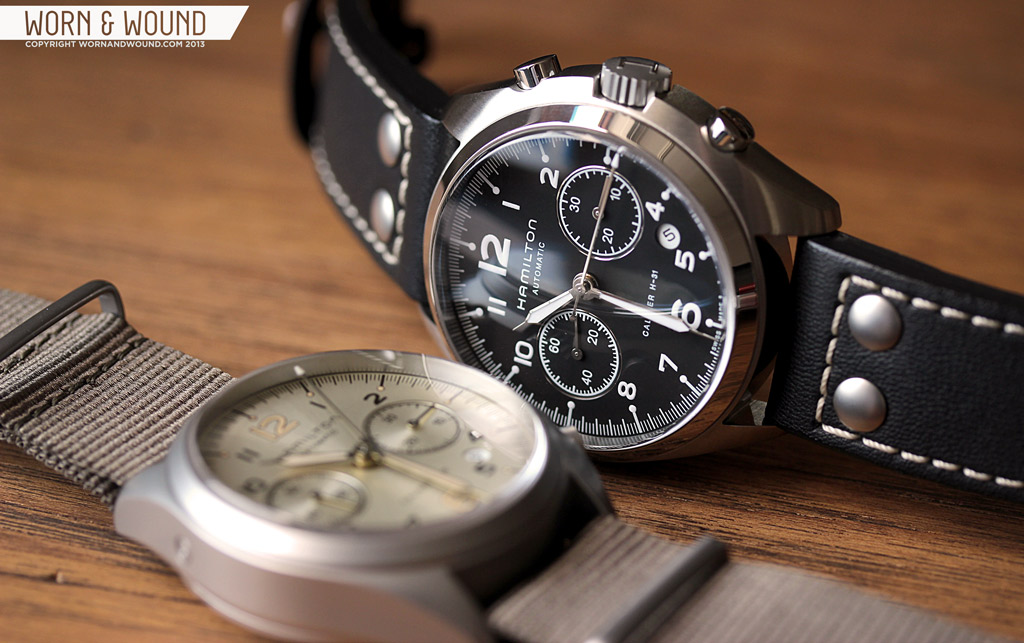For over a decade, four companies–Hamilton, CWC, Newmark, and Precista–supplied simple, sturdy, 30-minute chronographs to the British military. Their classic black, two-register dials, workhorse Valjoux 7733 movements, and asymmetrical case design led to high usability and keep them popular and influential today.
Introduction
In the early 1970s, while the United States maintained and grew its military in response to the conflict in Southeast Asia and its Cold War with the Soviet Union, the British government was in the process of reducing its armed forces in both size and cost. As a very small part of these austerity measures, the UK Ministry of Defense (MoD) revised the Defense Standard (DEF-STAN) that prescribed the design characteristics of military pilots’ watches to allow for cheaper, commercially available movements to be used.
This change allowed manufactures to begin using one of the classic workhorse chronograph movements of the 1970s–the Valjoux 7733. This movement and the unique case design of these watches combined to become the British military pilot’s watch throughout the ’70s and into the early ’80s, before eventually being replaced by cheaper quartz chronographs. Today we’ll take a look at the design features that made (and keep) these chronographs so popular, we’ll discuss the collector market for these watches today, and we’ll wrap up with some modern watches whose pedigrees are a direct line to these classic chronographs.









 Featured Videos
Featured Videos














